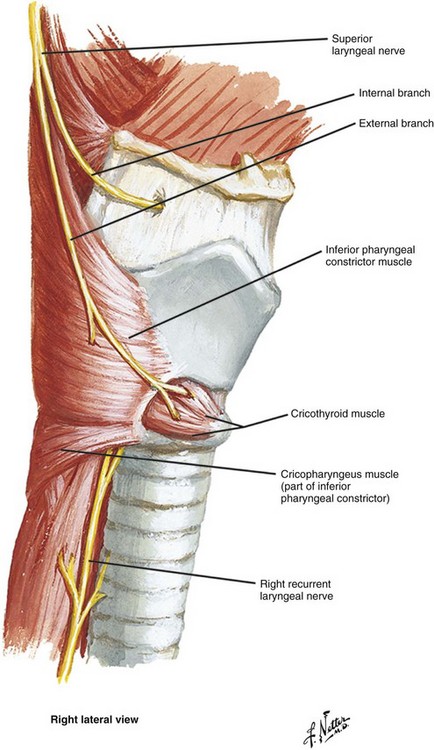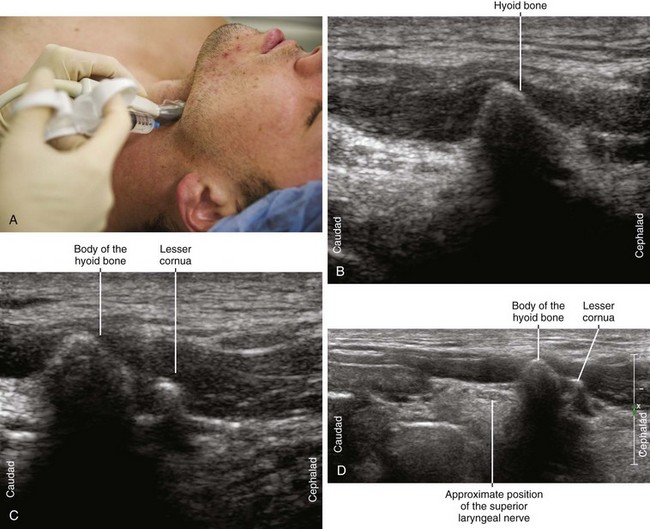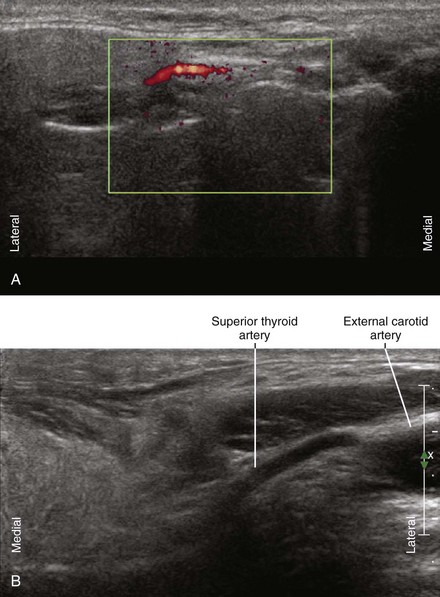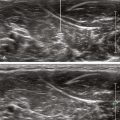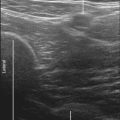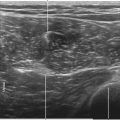58 Superior Laryngeal Nerve Block
The superior laryngeal nerve lies close to the superior laryngeal artery. The internal branch of the superior laryngeal nerve lies on average 2.4 mm inferior to the greater horn of the hyoid bone.1 The hyoid bone is U shaped in transverse scans of the neck. The superior laryngeal nerve enters the larynx through an aperture (ostium) in the thyrohyoid membrane together with the superior laryngeal artery and vein.
Suggested Technique
Clinical Pearls
• The external branch of the superior laryngeal nerve lies near the superior pole of the thyroid gland. It can be difficult to identify, even with direct dissection and nerve stimulation.2
• The internal branch of the superior laryngeal nerve lies immediately inferior and deep to the greater cornu of the hyoid bone.3 This branch is about 2 mm in diameter in this location. The internal branch travels 7 mm before piercing the thyrohyoid membrane to supply sensory innervation to the larynx above the vocal cords.
• The superior laryngeal nerve lies superior to the superior laryngeal artery.4 The superior laryngeal nerve descends to join the superior laryngeal artery below the greater cornu (inferior horn) of the hyoid bone. Ultrasound can be used to guide injection of local anesthetic above the superior laryngeal artery.
• One concern is that aspiration may occur at any time throughout the duration of superior laryngeal nerve block.5 This block is best performed in patients who are nothing per mouth (NPO).
• Block assessment is performed by testing phonation (the external motor branch of the superior laryngeal nerve to the cricothyroid muscle) or by fiberoptic examination. If the external superior laryngeal nerve is blocked, the vocal cords will not be closed during fiberoptic intubation.
• The hyoid bone, and in particular the greater cornua, can be difficult to visualize with ultrasound imaging.
1 Furlan JC. Anatomical study applied to anesthetic block technique of the superior laryngeal nerve. Acta Anaesthesiol Scand. 2002;46:199–202.
2 Page C, Laude M, Legars D, et al. The external laryngeal nerve: surgical and anatomic considerations. Report of 50 total thyroidectomies. Surg Radiol Anat. 2004;26:182–185.
3 Stephens RE, Wendel KH, Addington WR. Anatomy of the internal branch of the superior laryngeal nerve. Clin Anat. 1999;12:79–83.
4 Furlan JC, Brandão LG, Ferraz AR, et al. Surgical anatomy of the extralaryngeal aspect of the superior laryngeal nerve. Arch Otolaryngol Head Neck Surg. 2003;129:79–82.
5 McLoughlin AL. Superior laryngeal nerve block as a supplement to total intravenous anesthesia for rigid laser bronchoscopy in a patient with myasthenic syndrome: risk of aspiration? Anesth Analg. 1993;76:903–904.

